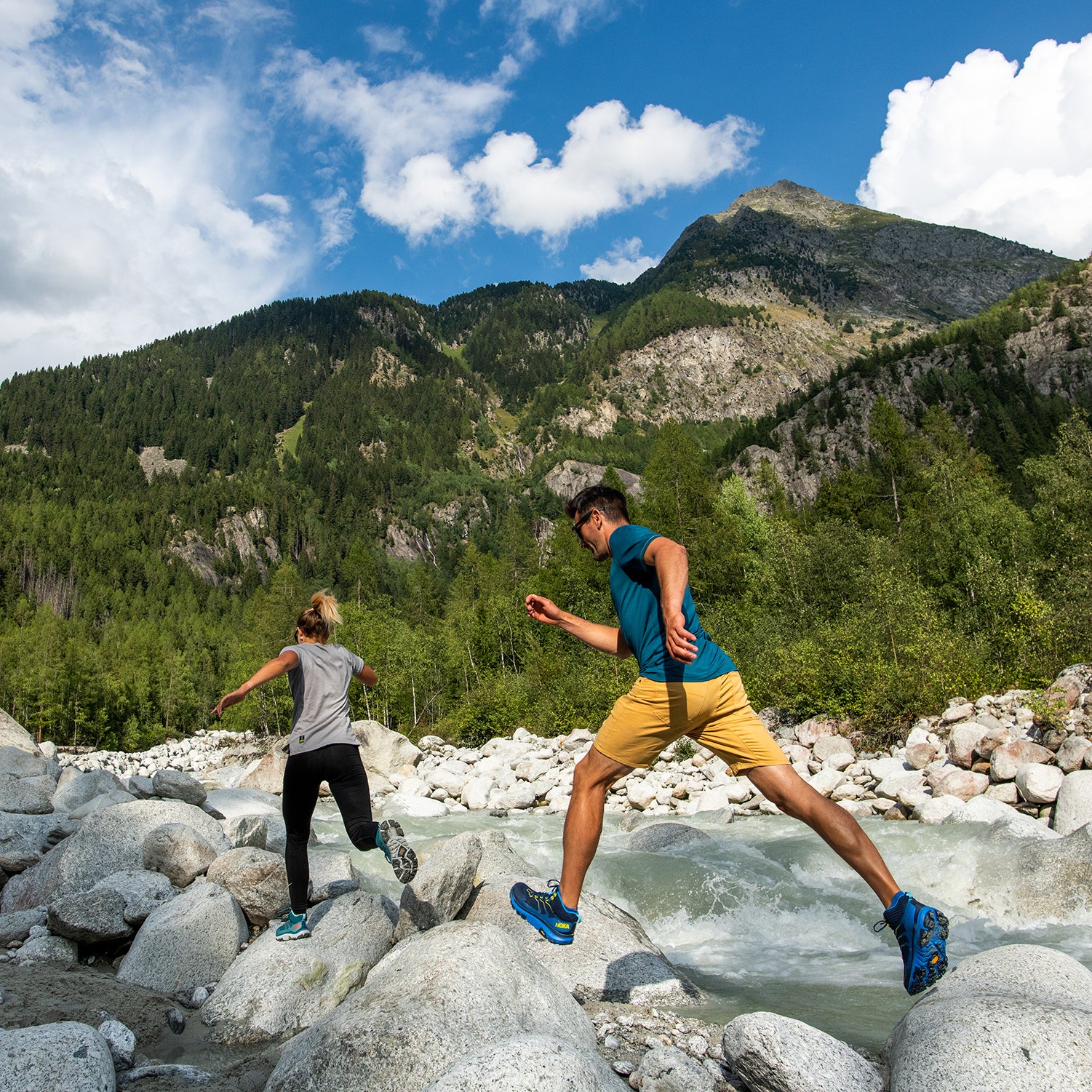There’s absolutely nothing wrong with taking your time and savoring the trail. But boosting your hiking speed has all sorts of advantages—from safety (getting off the summit earlier in the day) to having more time in camp to relax. How do you do it? Improving your fitness, obviously, but that’s just the start. Here are four more ways to cover ground faster.
1) Set the Right Pace
The fable about the tortoise and the hare was probably written by a primordial hiker; setting a consistent pace with a steady rhythm and sticking to it will, over time, result in more miles than bounding down the trail and taking rest breaks. At the ideal pace, you should be able to hold a conversation without becoming breathless, and anyone hiking alone should be able to sing to themselves. (Halsey? Really? No judgment…)
One technique for setting the pace is taking smaller steps than normal, which is more energy efficient at altitude as well. “Taking smaller strides doesn’t use as much energy, and keeps tempo and breathing more consistent,” says veteran mountain guide Dan Timbrell. Jake Gaventa of the Colorado Mountain School says he sometimes has trouble keeping his tempo down. So in the mornings he’ll wear one more layer of clothing than is necessary. If he starts sweating, he says, he knows he’s setting the pace too high.
2) Learn How to Rest
Look over your map or guidebook before any trip and choose rest points that coincide with overlooks, campgrounds, or other nice spots where you can sit down, add or remove layers, grab a snack, and ogle the scenery. That way, you won’t be adding an unscheduled stop every time a snow-covered peak comes into view.
On steeper, higher-elevation slopes, where you may lose energy quicker, Gaventa suggests employing the “rest step,” a mountaineering technique where you completely extend and lock out your rear leg while the front leg is bent, and then pause. Those micro-rests add up and will help you maintain a steady pace, helping to minimize unplanned breaks.
3) Streamline Your Gear
The biggest speed trap on the trail isn’t roots or rocks—it’s gear management. Poorly adjusted packs, shoes that rub, and inaccessible water bottles lead to the unscheduled stops that reduce mileage. If hiking in a group, make sure everyone is using a hydration system (water bottles are the enemy of speed) and that packs are properly adjusted to prevent shoulder or hip strain and chafing. Lastly, make sure bags are packed so that frequently needed items like maps, quick snacks, sunglasses, and light layers can be accessed on the move.
4) Manage Your Feet
The best way to ensure that your feet are ready for the trail is to pick the right shoes. Going into the mountains means choosing something warm, with grippy soles for climbing rock. Desert hikers need something that vents well. Gina Danza, an L.A.-based storyteller, photographer, and avid hiker, has put a lot of miles on her feet after running track in college. “I need something to cushion the blow completely,” she says. Danza recently switched to the HOKA ONE ONE® , a lightweight, cushioned boot designed with speed—and comfort—in mind. The Toa’s rubberized EVA midsole helps Danza’s feet stay comfortable and protected on the trail. “That’s been phenomenal for me.”
Speed hiker used to be an oxymoron, but that perfectly describes the . Leveraging HOKA ONE ONE® trail running expertise and innovations, we built a “lightest in class” waterproof hiker for adventures across any terrain. The sky’s the limit, speed hiker.

